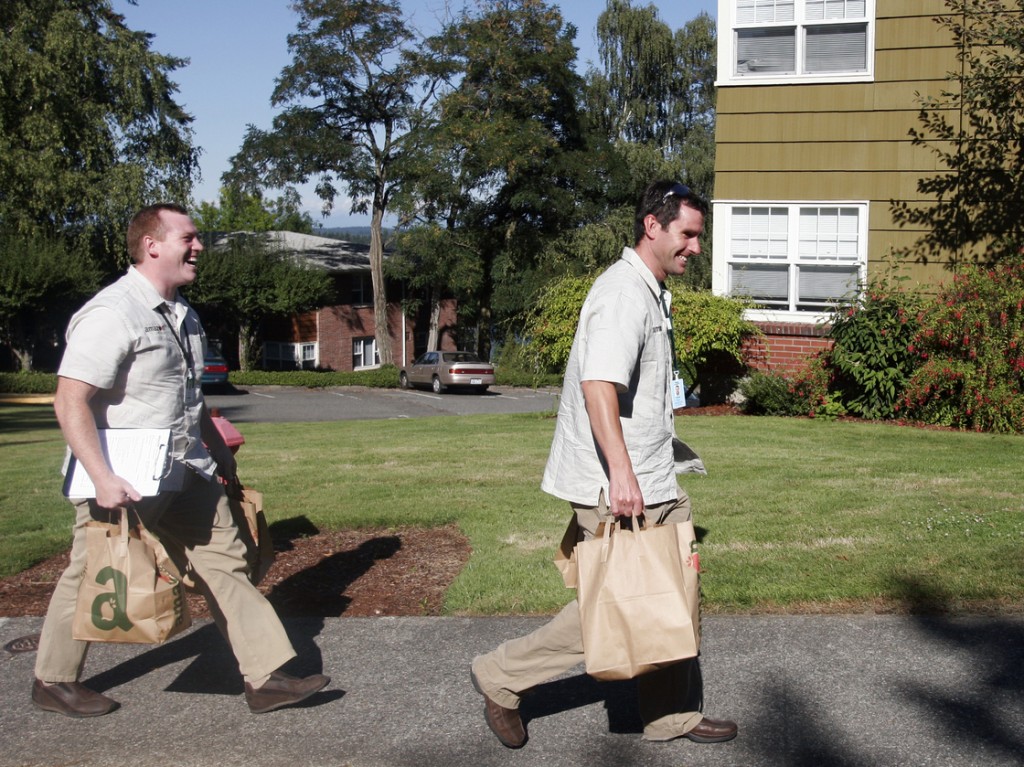"What this does is give Amazon the opportunity to connect with customers on a more frequent basis," he tells The Salt.
Right now, Bomberowitz says, most Amazon customers tend to make small purchases, one or two items at a time. But if Amazon can bundle your bananas with your books and batteries, it can make that stop at your door all the more profitable.
As for the grocery biz itself, it doesn't need to be a cash cow for Amazon right away. So can Amazon afford to lose money on grocery delivery?
"Absolutely," Bomberowitz says.
For now, analysts say the goal is really to break even with grocery delivery while also using the service to grow Amazon's same-day-delivery service.
In the past, distribution logistics have been one of the major stumbling blocks for online grocers, says industry analyst Bill Bishop of the consulting group Brick Meets Click. "Grocery products are heavy, large and bulky and expensive to distribute, but there isn't much money in the cost to cover that distribution," he says.
But Amazon, Bishop notes, has been busy building smaller distribution centers in more populated areas to stock items for same-day delivery. Amazon hopes that grocery delivery will get its trucks in these denser neighborhoods on a daily basis, RetailNet Group's report notes.
Same-day service, says RetailNet Group's Bomberowitz, "has proven popular enough in Seattle that Amazon is expanding it."
Indeed, part of the reason Amazon spent so many years testing the AmazonFresh concept in Seattle is that it wanted to get the model right, analysts say.
The service, says Bomberowitz, is designed to deliver "ultimate convenience" and includes features like no minimum order, pre-dawn delivery (the most popular option) and the ability to choose the time when your food shows up. You can also opt to have your groceries dropped off in a chilled tote bag. (And as we've previously reported, there's also the benefit that such services can be more environmentally friendly than schlepping to the store yourself.)
In Seattle, at least, the service also includes delivery of goods from a select group of "favorite" local vendors, from artisan breads and doughnuts to craft beers from the famous Pike's Place Market, plus delivery of meal components from local restaurants. RetailNet Group analyst Logan Gallogly says she expects AmazonFresh to offer a similar local component as it expands into Los Angeles and San Francisco.
So who are the likely shoppers for this service? This is not for the people who find joy in squeezing avocados to find the best one in the bin. But it is for busy, moneyed professionals who will happily delegate that task to someone else, Bishop says.
Copyright 2013 NPR.
